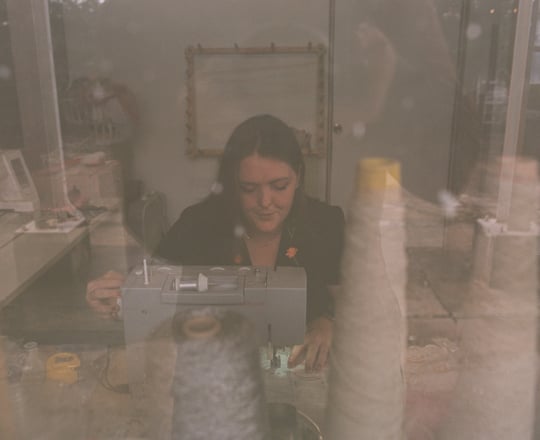Resurrection in the form of digital clones and questioning mortality in fantasy worlds. Jacolby Satterwhite copes with battling illness, both personally and in proximity to himself, by visually rendering immortality. Using gaming as a platform in which to manifest these worlds, Satterwhite implements the digital sphere and modern technology to poke at this commercialized desire to live forever.
Born in Columbia, South Carolina, Satterwhite was diagnosed with cancer at a very young age. He recounts how playing Final Fantasy video games in the hospital affected him during such a traumatic period. This formative entertainment morphed into an artistic practice that creates life from virtual nothings. Through dancing avatars and a sculptural world made from digital space, Satterwhite investigates performance, embarrassment, and masculinity in American culture. “Having a public practice that circulates in galleries and museums is vulnerable because you’re publicly archiving yourself in ways that you might not feel are flattering in the future. It’s a masochistic performance gesture to say the least,” notes Satterwhite.
The loss of his mother in 2016 further introduced themes of ritual and regeneration into the artist’s work. Satterwhite turned his mother’s voice, songs, and drawings into virtual reality records and 3D printed objects. The work reflects on the power of legacy and memory, allowing his late mother to exist and create after her death.
In turn, Satterwhite recreates himself in his work over and over again. For example, in a digital version of his likeness, the artist becomes the Doubting Thomas. In his interpretation, every figure in the biblical scene is Satterwhite, prodding the wound that he himself bears, but also serving as an observer. Satterwhite’s works are a testament to the ability to encircle oneself in seeing and speculation in order for the artist to believe he is alive and present in the living world, despite all odds.
This film is part of Burnaway’s partnership with Art21, an organization that produces award-winning documentary films about the world’s most groundbreaking contemporary artists. The collaboration intends to deepen an understanding of visual art that hails from the South today.
Related Content

DIGITAL SKIN: OUTLASTING REALITY IN JACOLBY SATTERWHITE’S WE ARE IN HELL WHEN WE HURT EACH OTHER, BLAFFER ART MUSEUM, HOUSTON
Satterwhite’s response to survival is a roiling virtual Utopian landscape of iridescent lilac stages, candy pink skies, and manicured gardens—an updated Garden of Earthly Delights. Topless femmes spin around in a galaxy of voguing avatars, some of which are live-action footage of Satterwhite himself. It’s a baroque, opulent chaos, the rhythm of which only the residents of this digital galaxy know the logic to. Even its color palette feels like a form of reassurance, a stake in one’s ability to create the idyllic, if only, within one’s own mind. As Patricia Satterwhite, Jacolby Satterwhite’s mother, sings over the virtuosic panorama, the video evokes the idea of a paradise “planting in the air,” spun from the invisible threads of the Internet.

GHOST IN THE MACHINE: JACOLBY SATTERWHITE AT MITCHELL-INNES & NASH
When Patricia died in 2016, she left behind an entire archive of her art, music, and writing. Raised in Columbia, South Carolina, Jacolby Satterwhite now lives in Brooklyn and has been the subject of solo shows at Pioneer Works, the San Francisco Museum of Modern Art, and the Fabric Workshop in Philadelphia. Though Satterwhite has departed from his family home, his childhood in South Carolina and his identity as a queer, Black, Southern artist continues to influence his work in monumental ways. In an interview with Evan Moffit of Frieze, Satterwhite described his mother as a “mentally ill” but prolific folk artist who “over the course of her life, recorded seven albums and made over 10,000 drawings… She was making these drawings with an enigmatic language like a Gertrude Stein poem.”




